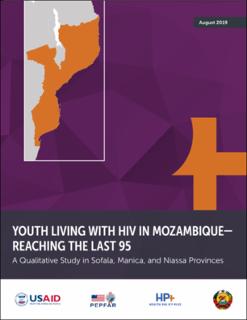| dc.description.abstract | Introduction Mozambique is working to achieve sustained epidemic control through the “95-95-95” goals outlined by the Joint United Nations Programme on HIV/AIDS (UNAIDS)—that by 2030, 95 percent of people living with HIV know their diagnosis (1st 95), 95 percent of those diagnosed receive sustained antiretroviral therapy (ART) (2nd 95), and 95 percent of those on ART are virally suppressed (3rd 95). With more than 1 million people on treatment, Mozambique is making progress toward reaching these goals. However, low rates of treatment retention, especially among children (ages 0–14 years), adolescents (ages 15–19 years), and young adults (ages 20–24 years), threaten to undermine epidemic control. For example, in 2017, the 12-month rate of retention in care was only 70 percent—and only 62 percent among adolescents (PEPFAR, 2018).
To meet their global commitments, Mozambique must continue to use data to rapidly design, refine and scale up programming to address the specific barriers faced by adolescents and young adults, building on successes so far achieved. The Government of Mozambique is rolling out various epidemic control strategies to strengthen the HIV response and better meet the needs of young people living with HIV. However, the response is hindered by a lack of input from young people living with HIV and their caregivers.
This study was conducted by the Health Policy Plus (HP+) project, funded by the U.S. Agency for International Development (USAID) and the U.S. President’s Emergency Plan for AIDS Relief (PEPFAR), in collaboration with the Ministério da Saúde (Ministry of Health, Mozambique) (MISAU). It is intended to provide novel and timely data to guide policymakers and program managers in designing and refining adolescent HIV treatment strategies. HP+ also aimed to take stock of progress in rolling out new initiatives (such as viral load testing and Serviços de Amig | |
